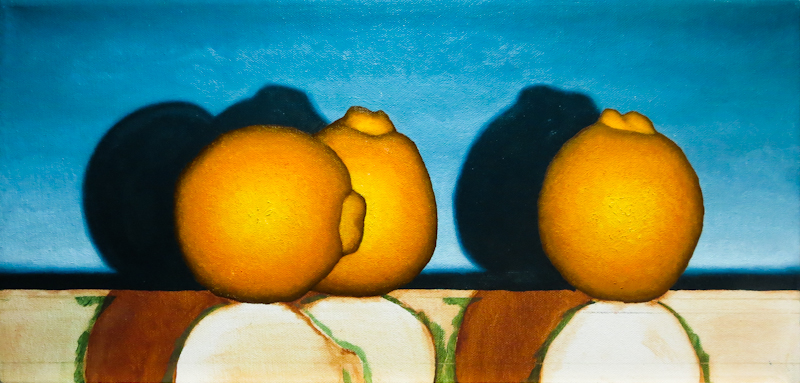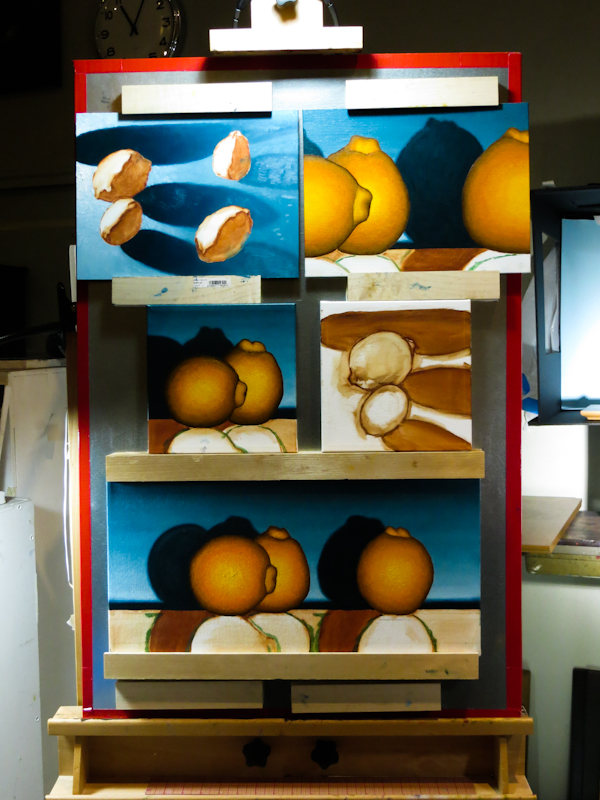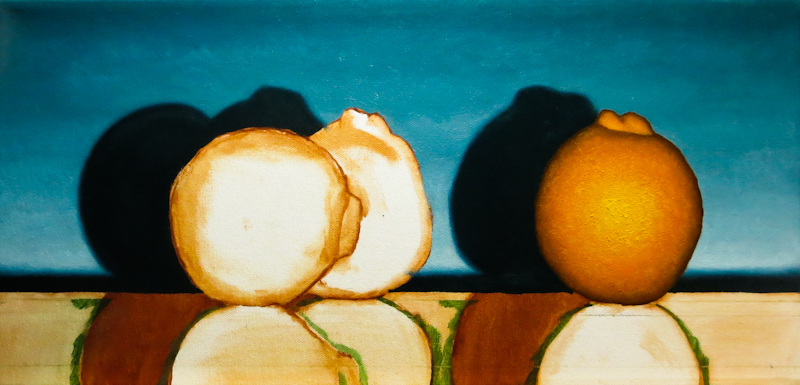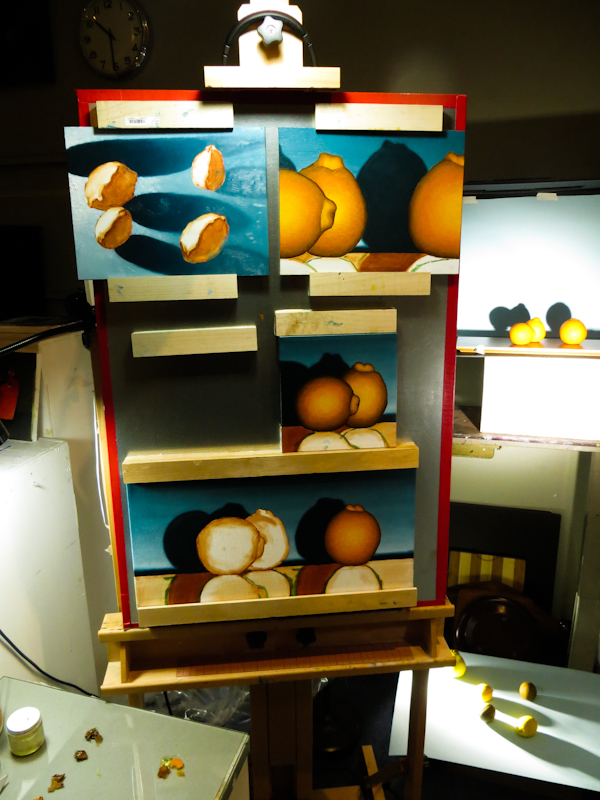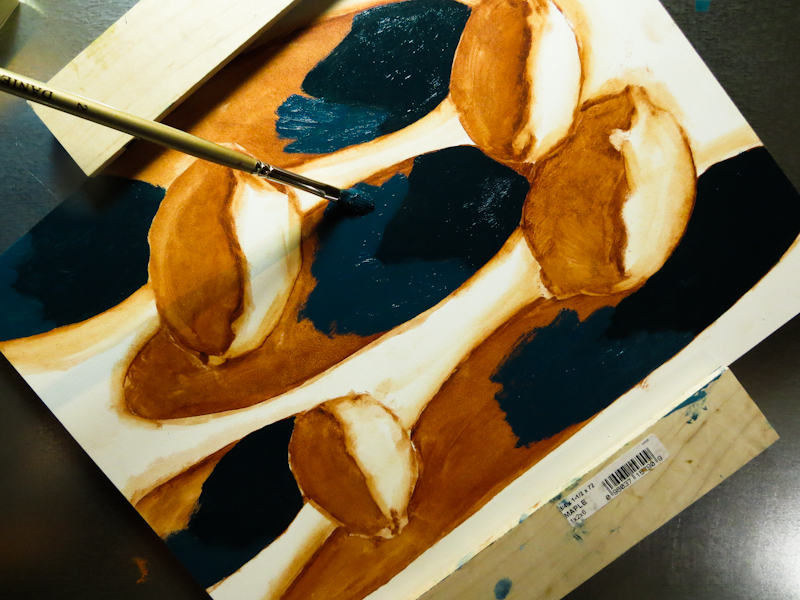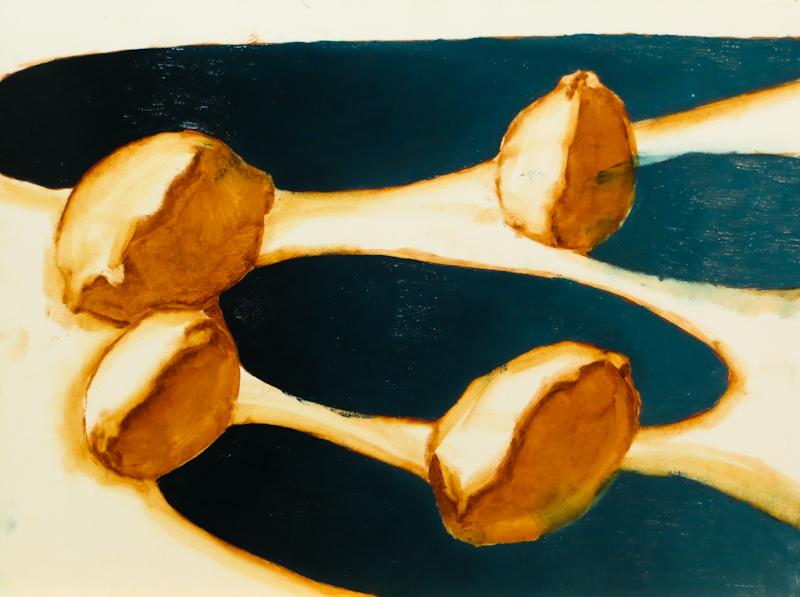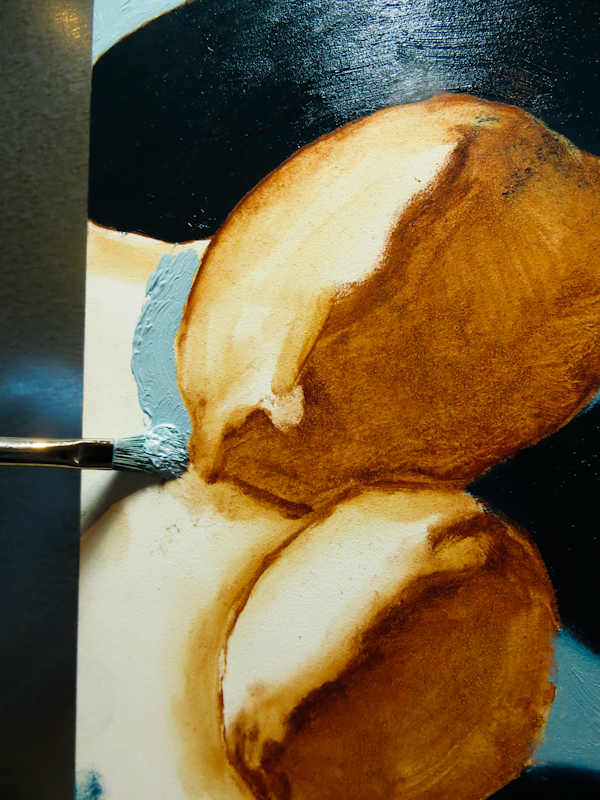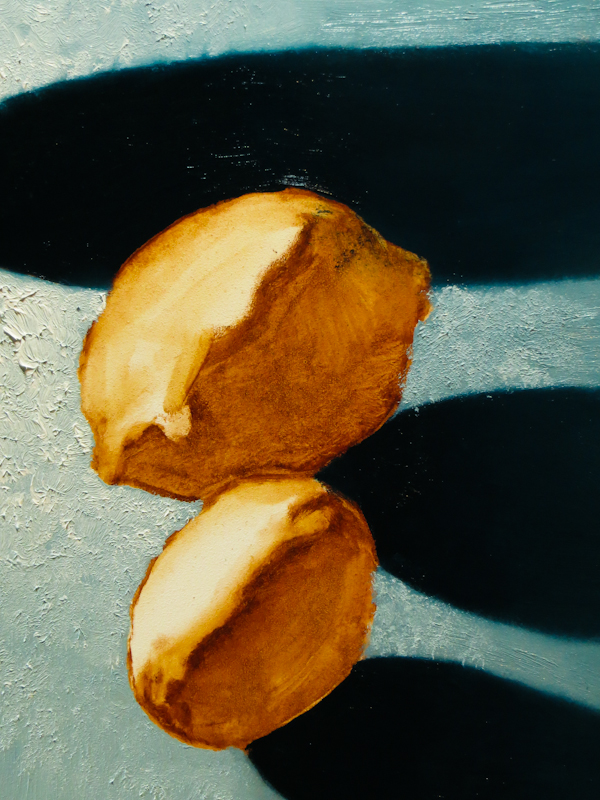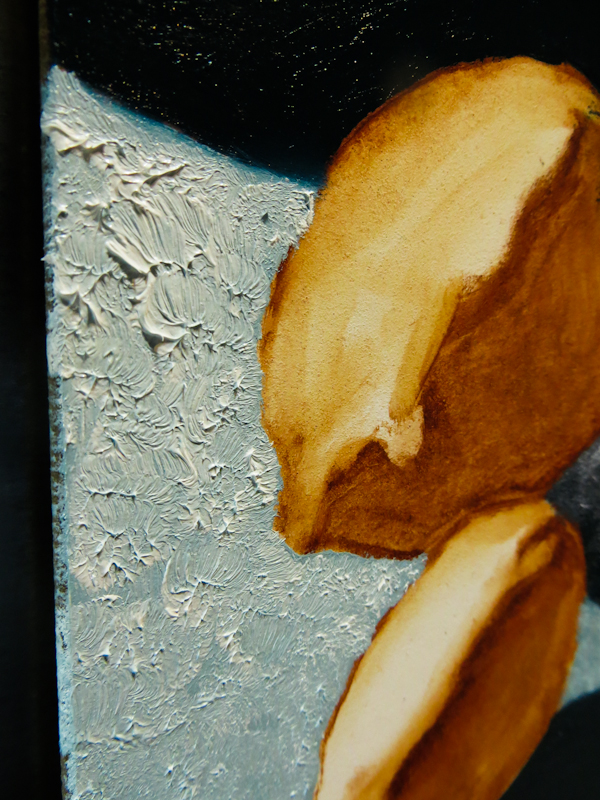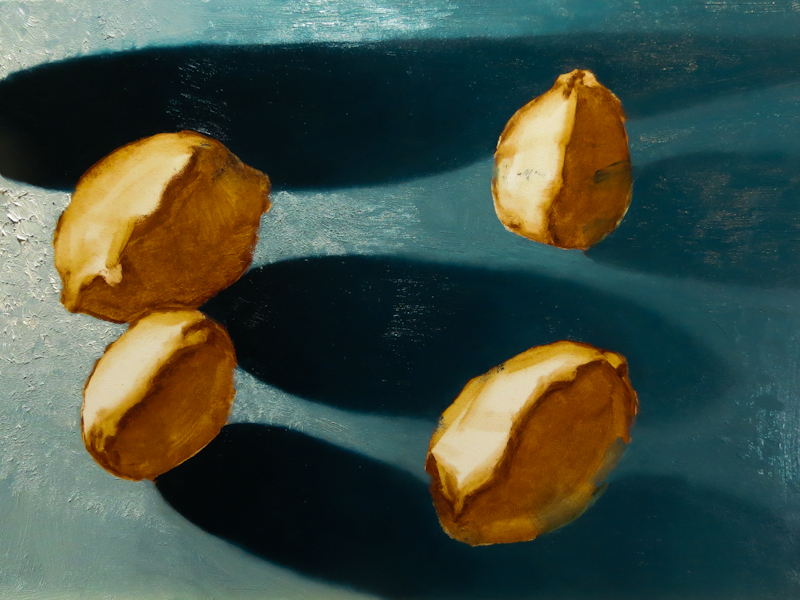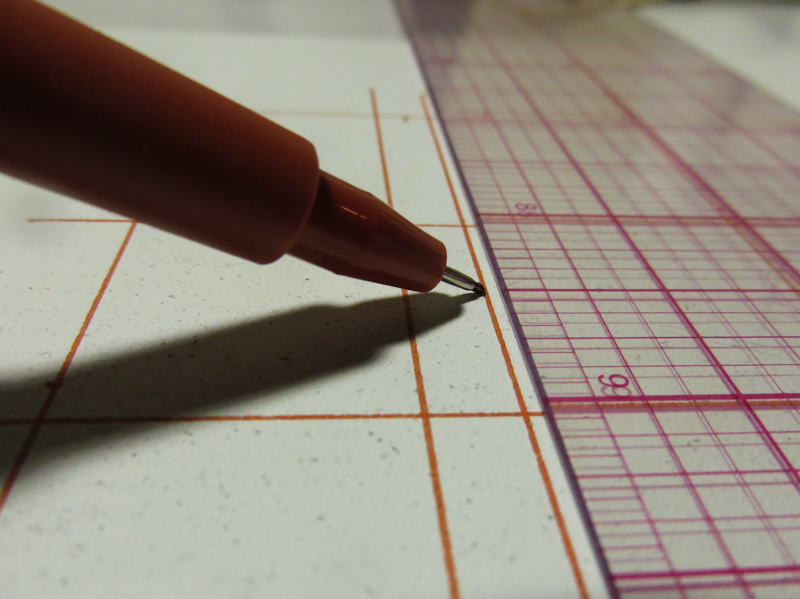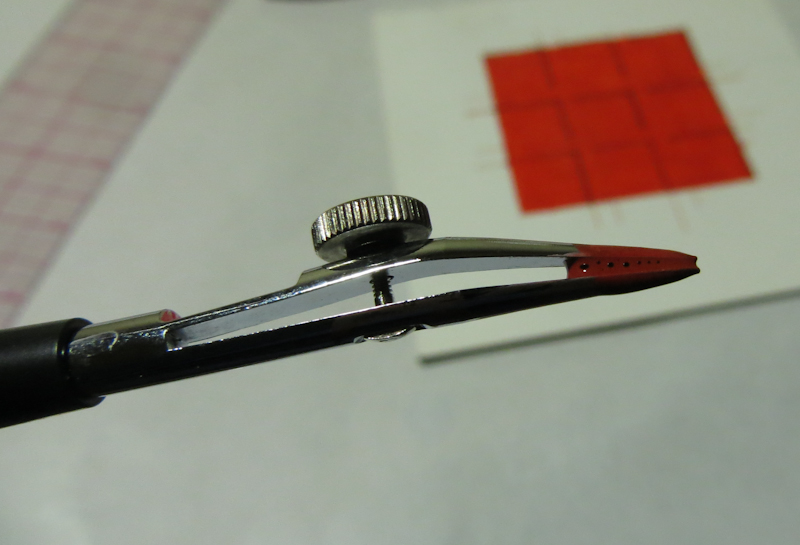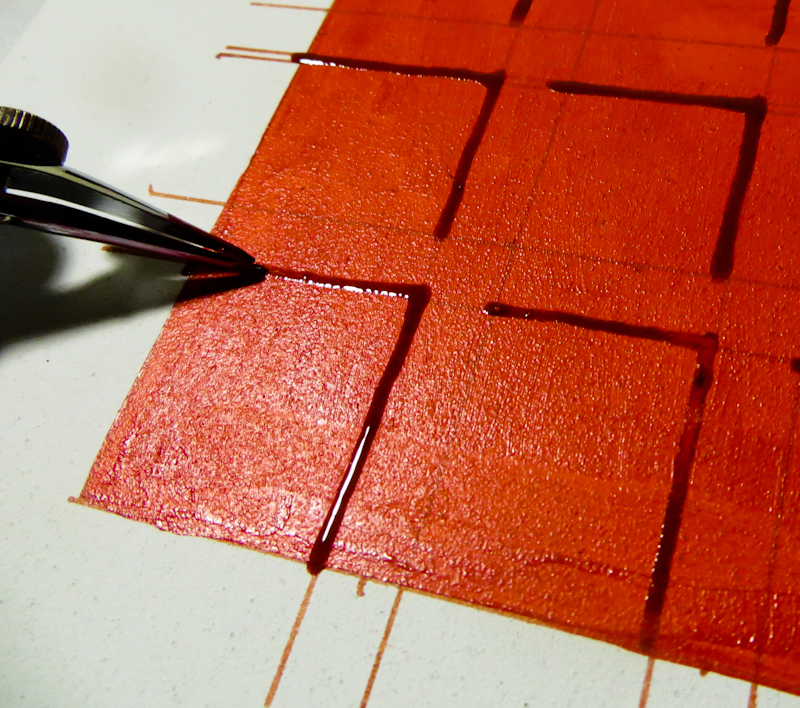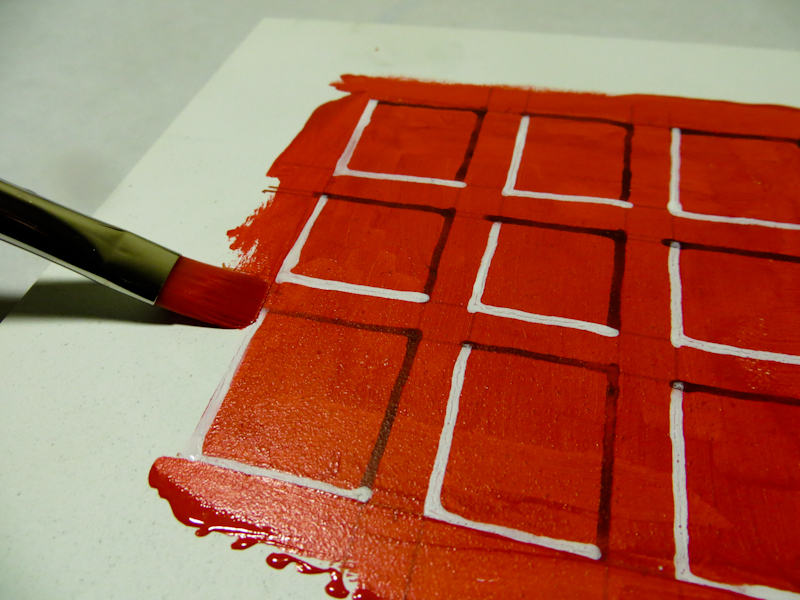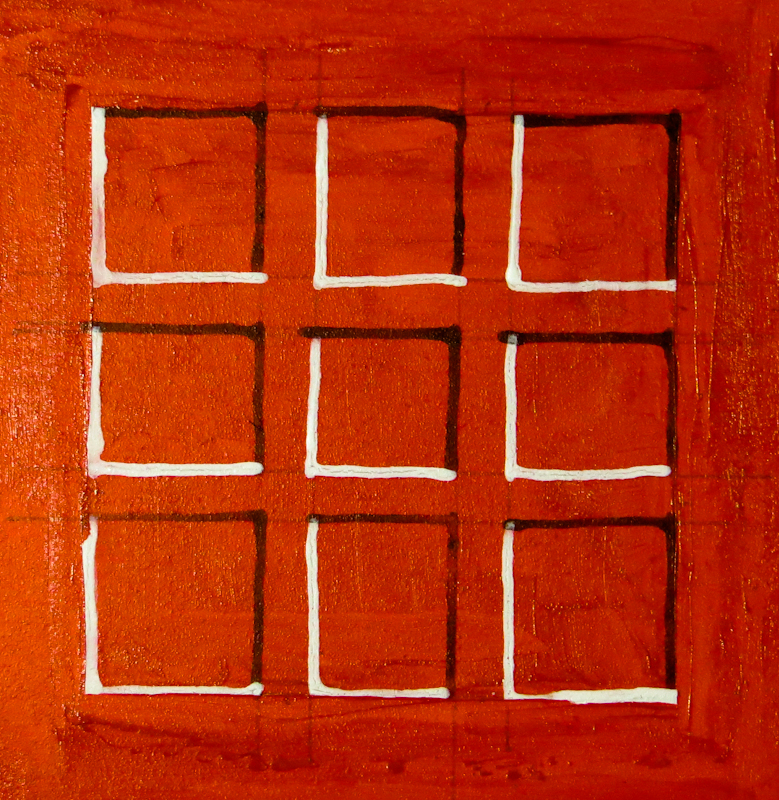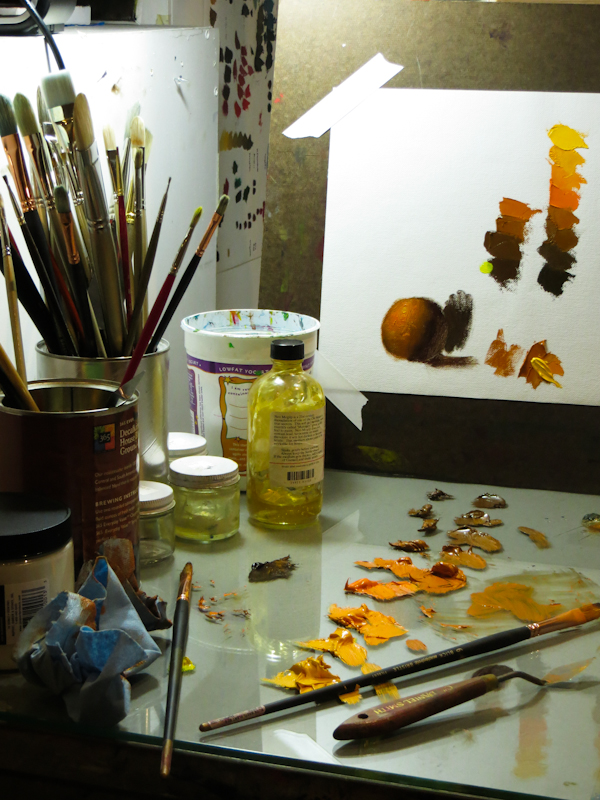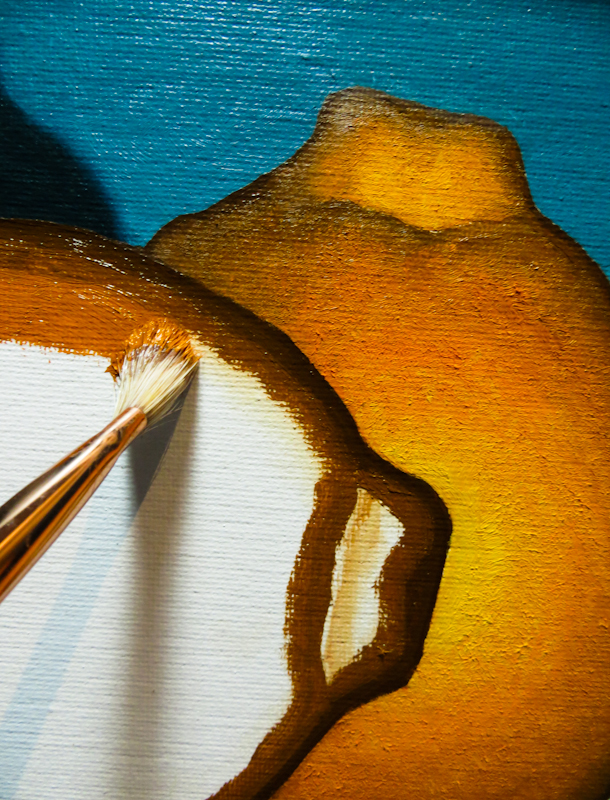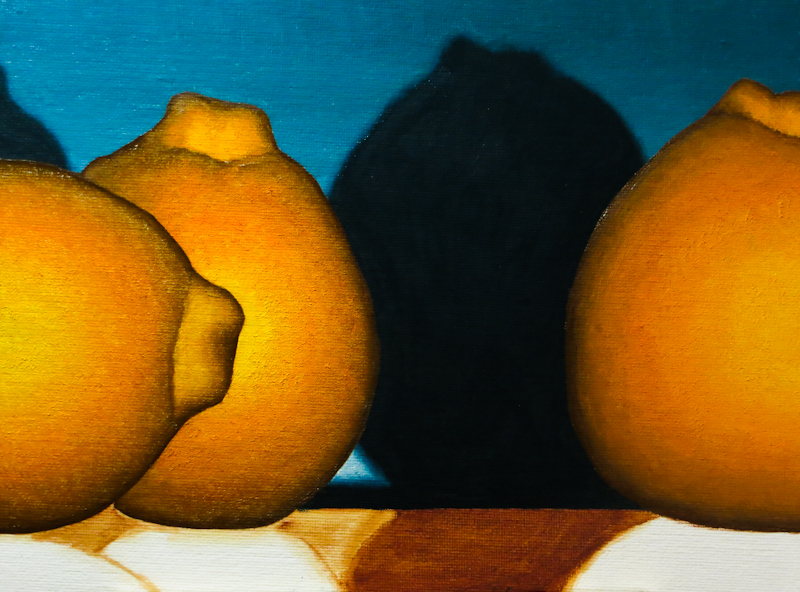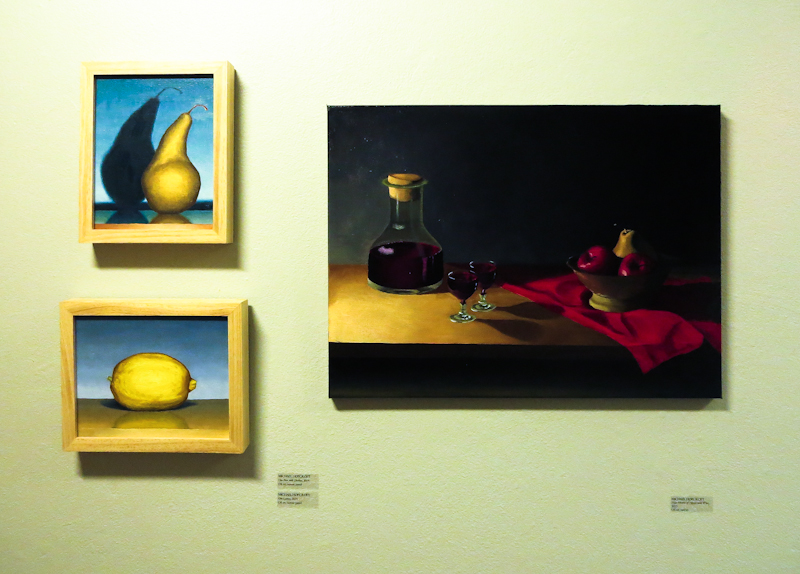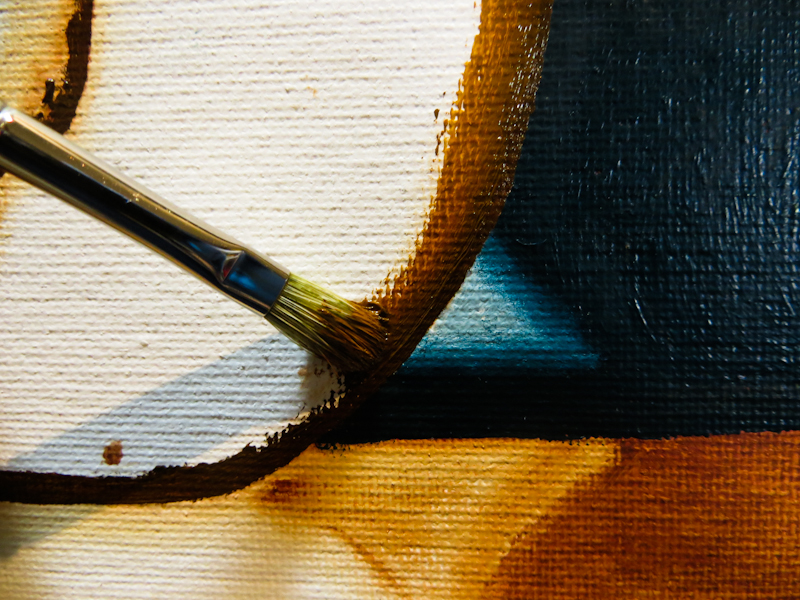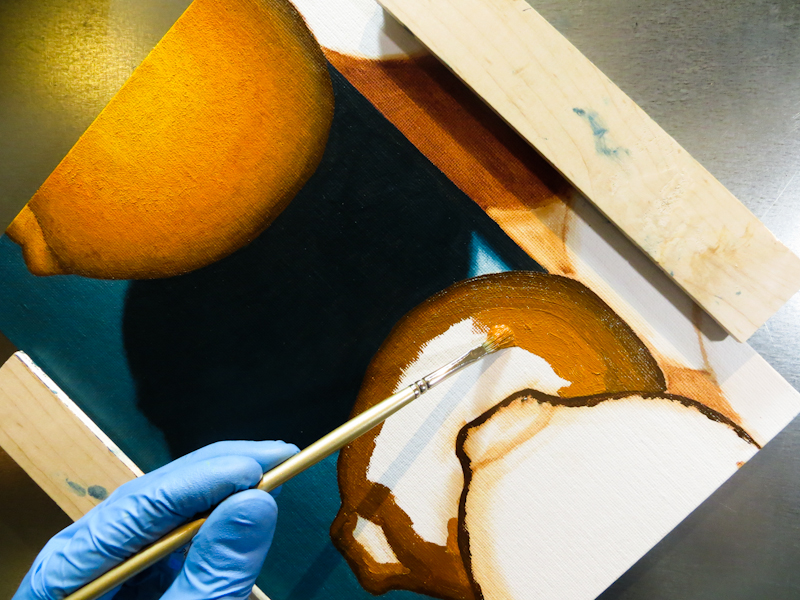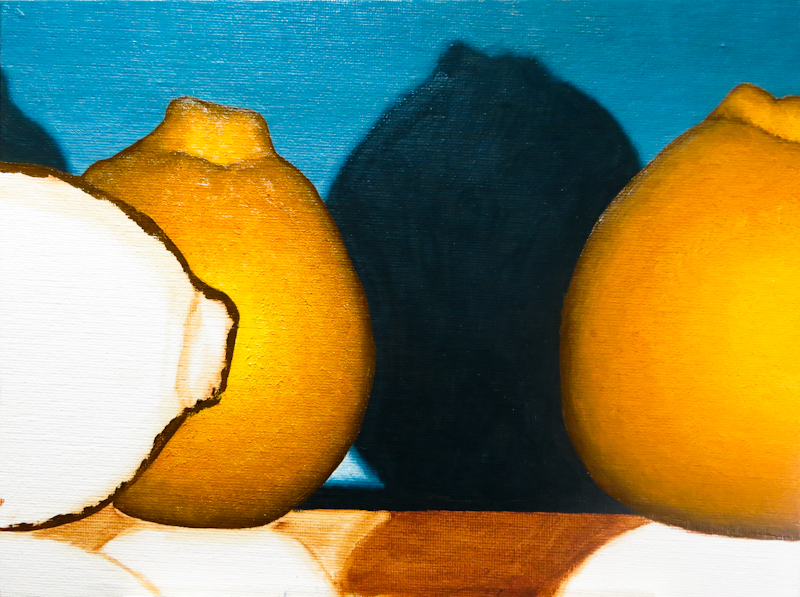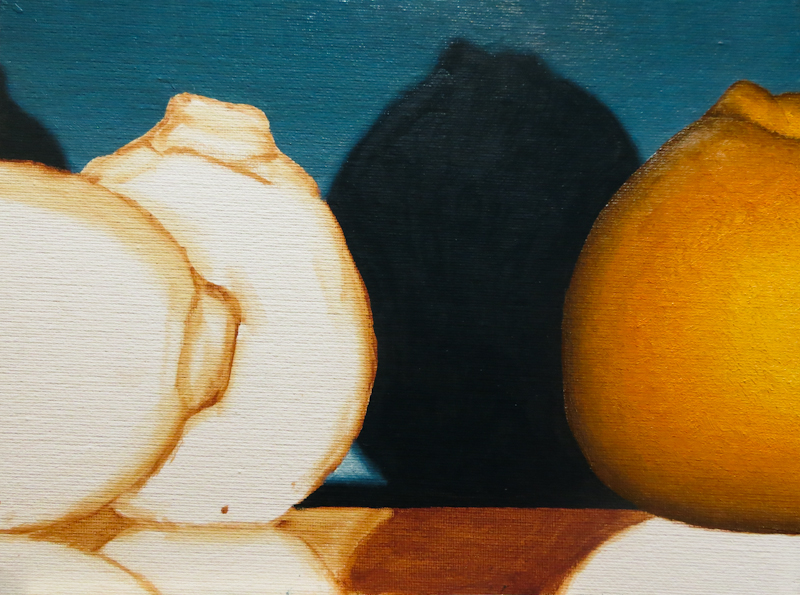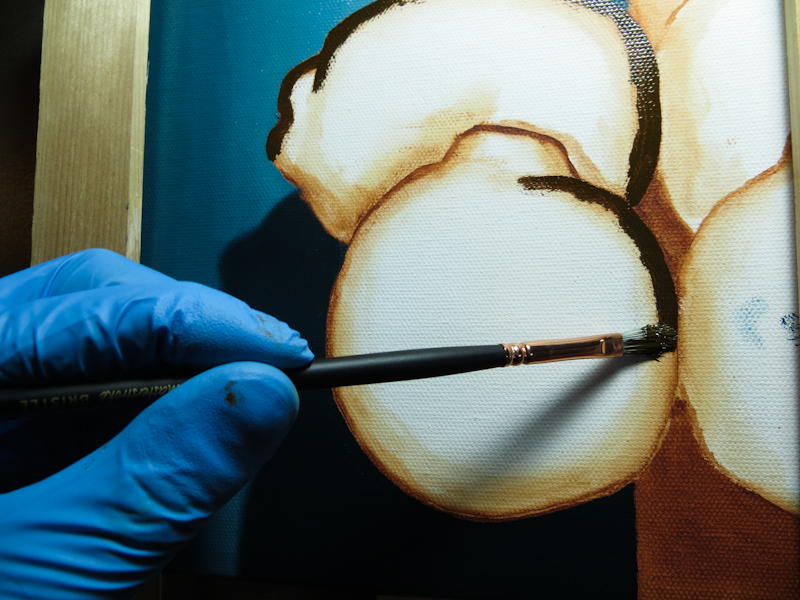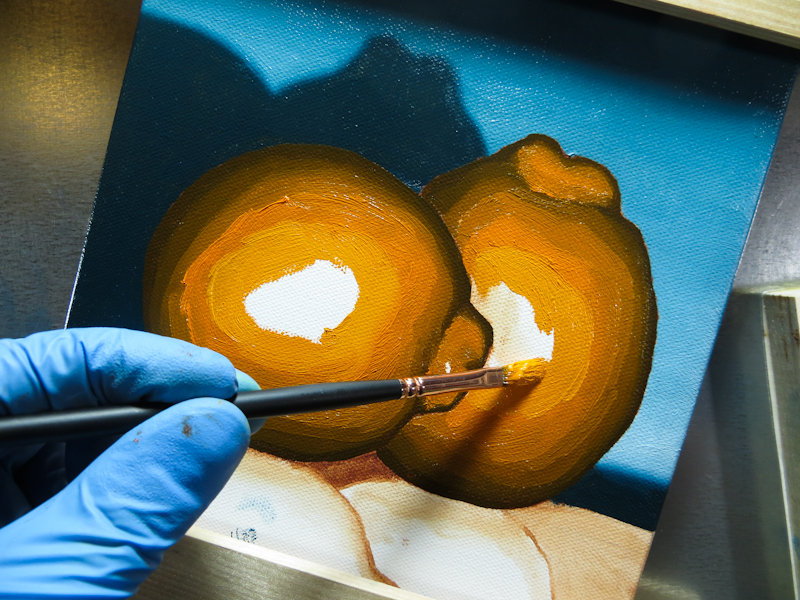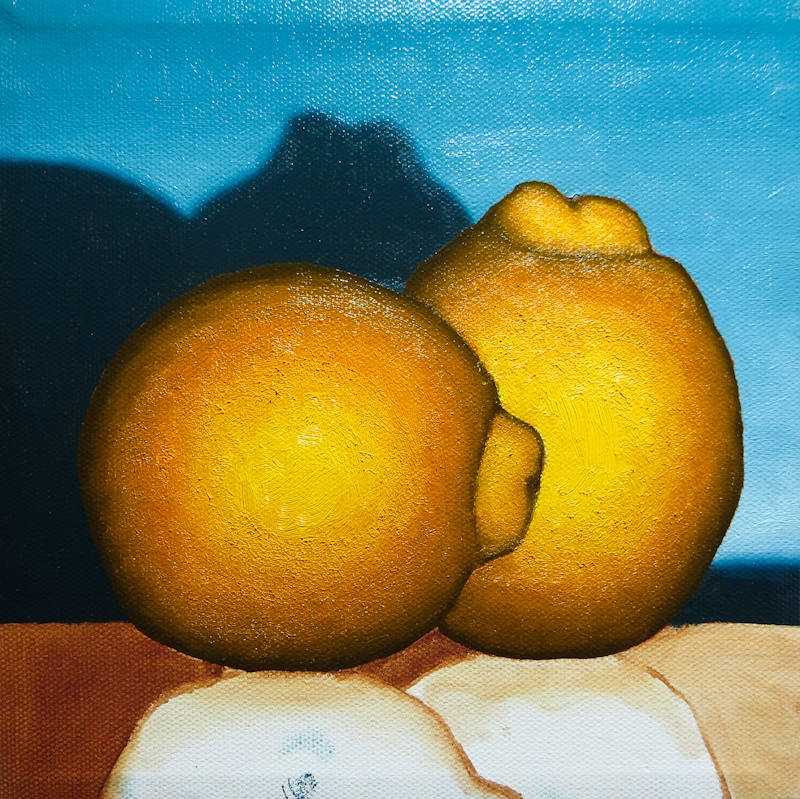I finished the last two oranges and then started another 8″ x 8″ painting for the Maple Valley Arts Ten-Twenty-Forty show. Now I just have to paint a bunch of reflections and table tops, and two lemons and two limes.
Tag Archives: oil
April 23, 2014
April 22, 2014
I finally got around to painting the background for my lemons and limes painting. This time I’m trying to give the shadows a more nuanced treatment where they start sharp, crisp and dark on the left near the light source, and then feather out and become lighter as they move to the right. At the same time, the background transitions from light on left to mid-tone on the right.
It looks great, but the thing that really excites me is the paint texture. I kind of stumbled on to it – as I was trying to lighten up the left side painting, I accidentally left some globs of Titanium White on the surface and they looked really good so I added some more.
The textured paint makes the light seem even brighter and I think it will harmonize nicely with the textured paint that I plan to use for the lemons and limes.
Architectural Details
Tonight I experimented with a ruling pen to paint architectural shadows and highlights. My goal was to paint something that looked like a garage door with nine recessed rectangular panels. I used acrylic paint, instead of oils, so that I could quickly dry each layer before proceeding.
I found the ruling pen easy to use for lines from 1/16 of an inch down to the smallest hairline. The pen requires thin paint – about the consistency of half and half. After diluting the acrylic paint with water I found it had become nearly transparent. This wasn’t a problem for the test, but might be a bit constraining in a real painting. I also tried diluting the paint with Golden Self Leveling Clear Gel, but this was too thick for the pen.
I think the ruling pen will be good for things like powerlines, strands of hair, and sailboat rigging. It seems to work well for architecture, but I want to compare it with a liner brush and with the technique where, instead of painting the line, you paint the areas around it.
It will be interesting to see how the ruling pen works with oils.

I let the guidelines extend beyond the bounding rectangle so that I would be able to locate them after applying the first layer of paint.
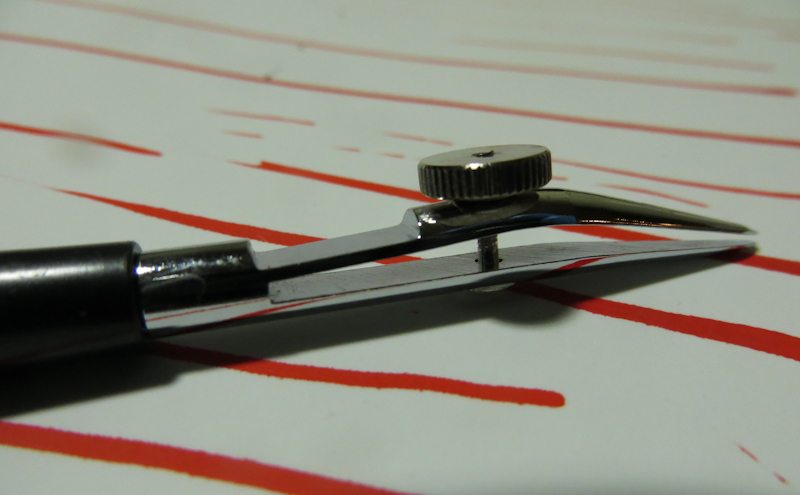
I used a ruling pen to make narrow straight lines. The ruling pen has two prongs that hold ink, or in this case, diluted acrylic paint, between them. The thumbscrew adjusts the spacing between the prongs which sets the thickness of the line.
Still Life with Paint Brushes
April 17, 2014
Artists of the Faigin Atelier Show
Stop by Gage Academy for the Artists of the Faigin Atelier Show in the Entry Gallery. Also on display are some magnificent works by students from the Kang-O’Higgins Atelier in the Rosen Gallery. Both shows run through May 4th.
April 10, 2014
I’m getting better at painting oranges. The first two small ones took four hours, the second two hours, and now the most recent one took only an hour – and it looks better.
April 3, 2014
I finally got back to painting and this new Mineola went much more quickly than the previous one. I only spent an hour on this one and I’m happier with the rendering of the form. Can’t wait to see how the next couple of pieces turn out.
March 17, 2014
After a lot of shades of blue, I am now working with orange paint. My string was based on Cadmium Orange, with Cadmium Yellow and Titanium White at the lighter end, and Prussian Blue and Burnt Umber at the dark end. The results are pretty good, but I found the process harder than when I was painting the pears – this session took me almost four hours, and two of the hours were spent readjusting the form and then evening out the gradient.
I think the next one will go smoother if I paint with finer gradient steps and I get the initial placement of the paint more accurate. One thing that slowed me down was that I made the darker regions too wide and this caused me to adjust and readjust the gradient many times over. If I had painted the dark regions in the right place, at the right size, the first time, I would only have had to smooth the gradient once.
The other thing I want to improve is subtlety of the transition between the body of the Mineola and the lump where the stem attaches. In the picture, below, the transitional region is too dark.

